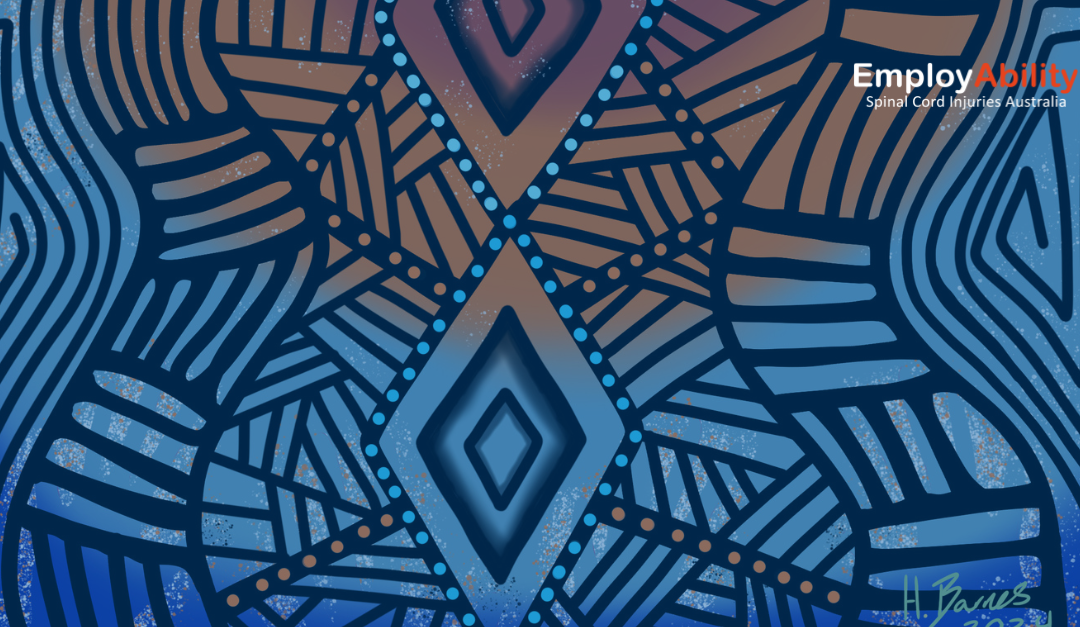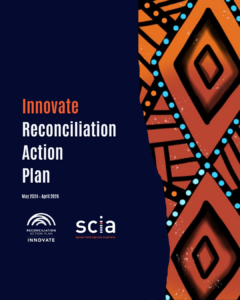EmployAbility and Spinal Cord Injuries Australia (SCIA) are committed to an equitable Australia and recognises the importance and significant contribution of the Aboriginal and Torres Strait Islander Peoples on whose lands we live and work.
We are proud to have previously developed our Reflect Reconciliation Action Plan (RAP), our formal commitment to Reconciliation with Aboriginal and Torres Strait Islander communities in 2021 and more recently, in 2024, we submitted our Innovate RAP to Reconciliation Australia for approval, which was granted in the August of the same year.
Click to view
Our vision is to increase awareness of Aboriginal and Torres Strait Islander cultures, histories, knowledge, and leadership within our community. Over the coming years we will work collaboratively to ensure that our own services are culturally safe and welcoming so that Aboriginal and Torres Strait Islander Peoples with spinal and neurological conditions have improved health and social outcomes.
This year, we were deeply humbled to work with First Nations artist Hunter Barnes to created a Narration through Optic incorporating motifs with dual representations, drawing from traditional Aboriginal culture and beliefs while conveying SCIA’s message. Hunter is a proud Ngiyampaa man.
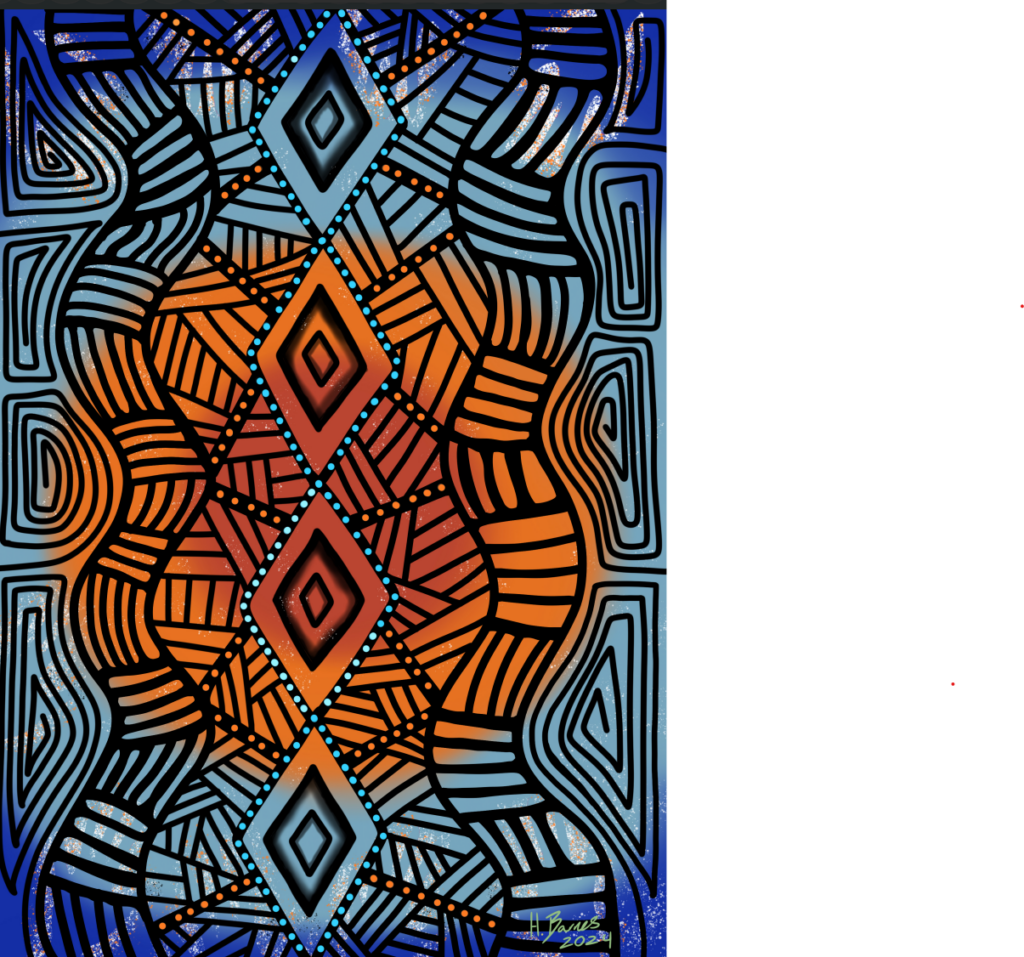
Narrator through optic: Hunter Barnes
Ngiyampaa Wangaaypuwan of the Pilaarrkiyalu (belah tree) people
Interpretation (words by Hunter Barnes):
Using the colour palette provided by SCIA I arranged the background colours to try and represent country. Using the deeper red colours in the centre fading to orange and then light and dark blue, I wanted to show how SCIA’s mission is a nationwide undertaking, stretching from the red centre to the coast.
I have implemented designs and motifs in this piece to represent multiple meanings. For them there is a dual representation and lesson, relating both to traditional Aboriginal culture and beliefs and applying this to the message that SCIA wants to convey with this artwork.
Starting from the inside to out, the four diamonds in the centre represent the 4 co-founders of SCIA. I arranged the diamonds in the rough shape of a human spine. They are the pillars and or backbone the company is built on.
The linework (Murruwaygu) in these diamonds and the patterns surrounding them is based on our traditional dendroglyphs which are found throughout much of Western NSW. Many of these are extremely sacred and revered sights in our culture indicating areas of great knowledge, significant events or places of great importance. (i.e., ceremonial grounds or resting places of significant people)
The two flowing bands either side of this are a representation of country and the intrinsic connections that bind us to it. Each flowing link is seen guiding and supporting the next, joining them together. Regarding the company this represents teamwork and the staff and management working together to create a strong structure for the company.
The spiral patterns on the outside edges of the piece represent a point of creation of a lesson stemming from the Dreaming (Marrathulpu). The lines themselves represent the passing on of important lessons and lore in an unbroken generational line. This responsibility is our ancestral responsibility – taught from our fore-fathers and mothers, teaching from the present to ensure the passing on of this knowledge to the next generation.
This lesson is parallel to SCIA’s intentions – the company passing on their ethos and morals to subsequent generations of staff and colleagues.
And finally, the handprints in the background represent the management and staff coming together and the hard work they have put in building the company from the ground up.

Artist profile
The Ngiyampaa (pronounced nee-yam-par) are dryland people.
Ngiyampaa Country takes in the plains and rocky hills east of the Darling River, extending north from Willandra Creek.
Hunter Barnes is a proud Ngiyampaa man descendant of Jimmy Keewong and Kitty Nerange.
Hunter is well known for his realism oil paintings, portrait, and contemporary Aboriginal artwork as well as tattoo. Through his family, practices his culture and over the years, moved into storytelling of Country through his artwork and artefact making. Hunter continues to grow his artistic expression aligned with his cultural responsibility and respect as a First Nation’s man.
I would like to acknowledge the traditional Custodians of this land where Aboriginal People have performed age-old ceremonies or story-telling, music, dance and celebration. We acknowledge and pay respects to the Elders, both past and present, and we acknowledge those of the future, for they will hold the memories, traditions and hopes of Aboriginal Australians. We must always remember that under the concrete and asphalt, this land is, was, and always will be traditional Aboriginal Land. We Acknowledge the contributions of Aboriginal Australians and non-Aboriginal Australian to the education of all children and people in this country we all live in and share together.
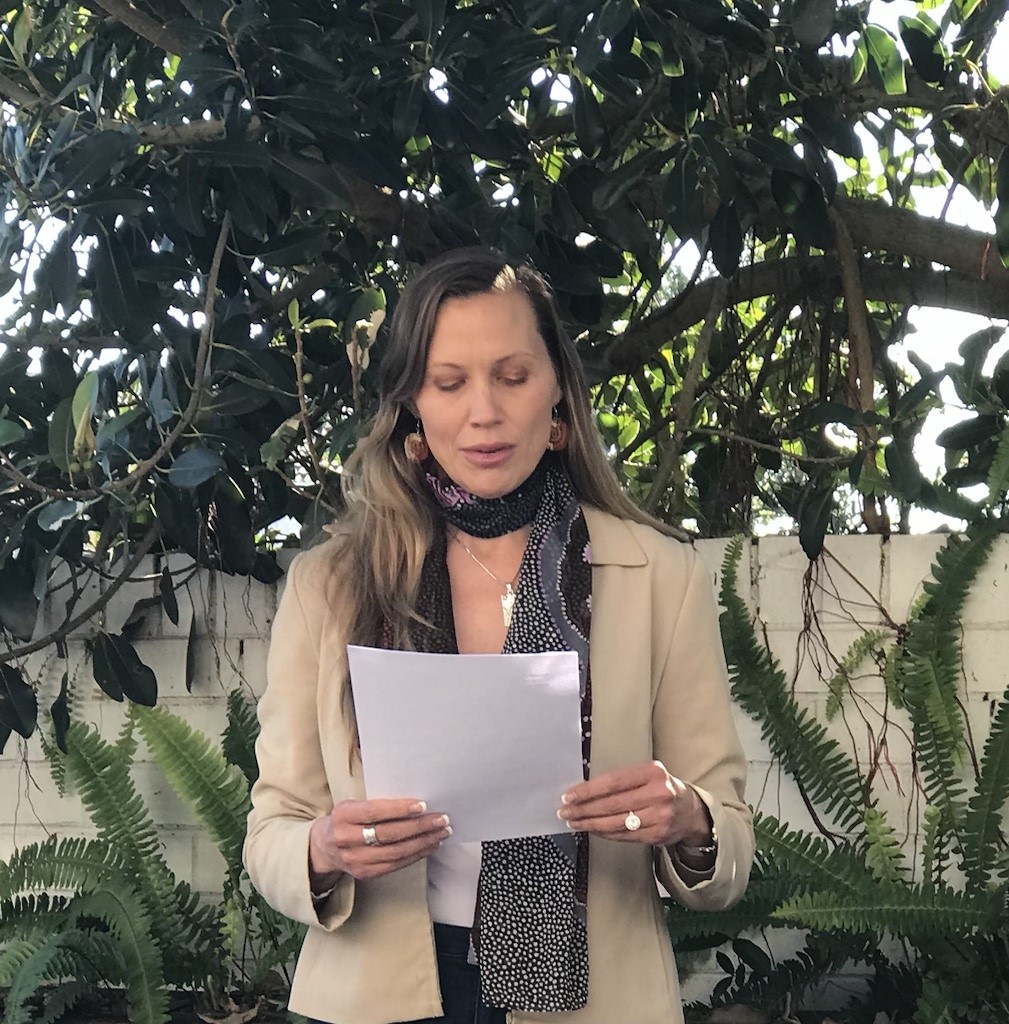
Dr Stacey Kim Coates.
During NAIDOC Week in July, our CEO, Dianne Lucas launched our new corporate Acknowledgement of Country developed by Dr Stacey Kim Coates. We encourage all staff to use this acknowledgement at the start of meetings and events. We Thank Dr Coates for her continued support and guidance.
Staff and their families took part in special activities throughout the week thank to our wonderful First Nations Advocate, Diyan Coe.
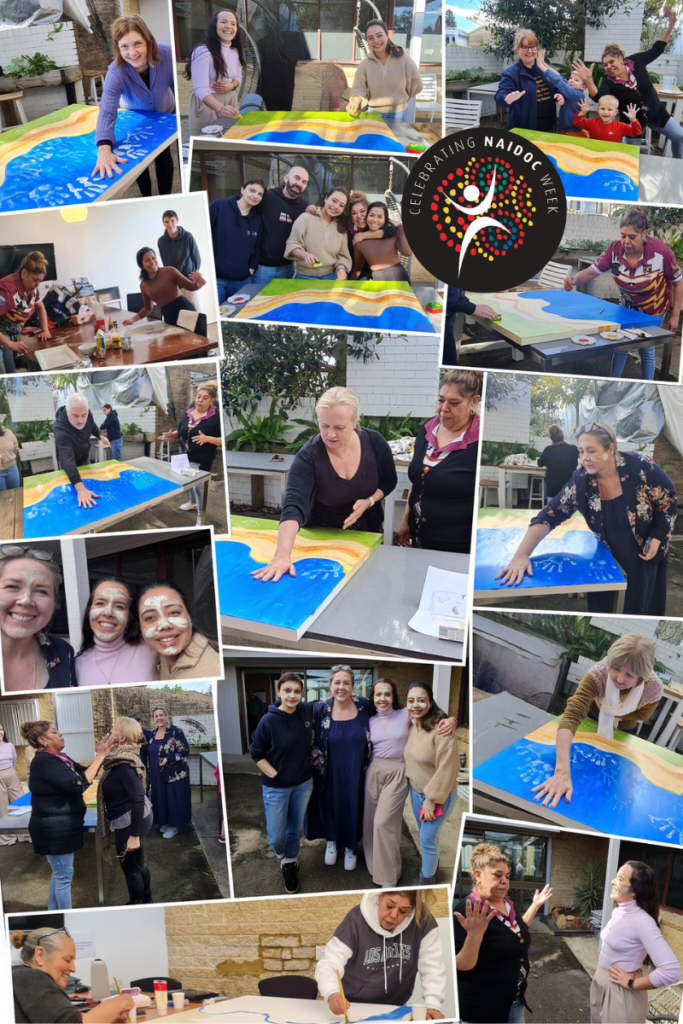
Our commitment continues.

